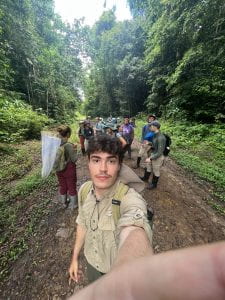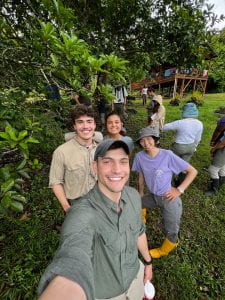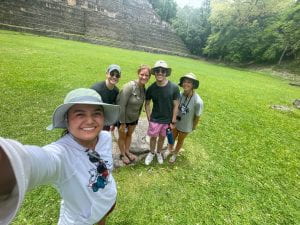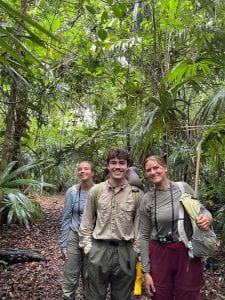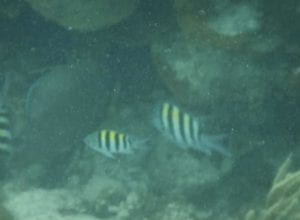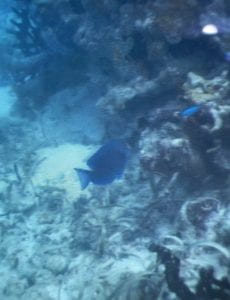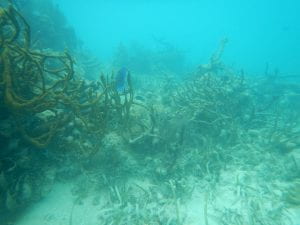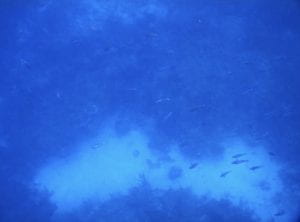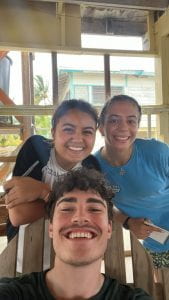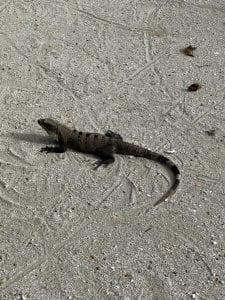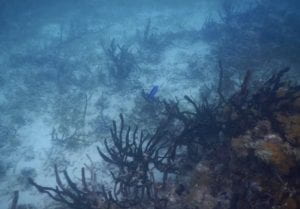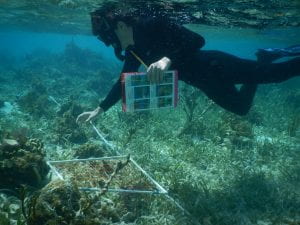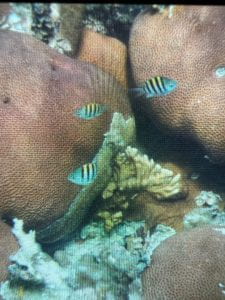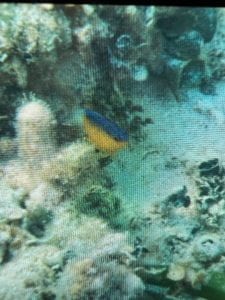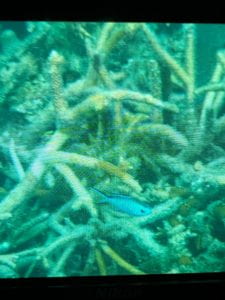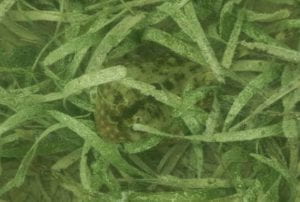Hey guys! It’s Michiel, and this will be my last blog post !!
My experience in Belize was life-changing; it was an adventure that I’ll never forget. I remember expecting that this class would push my boundaries, and it certainly did! I’ve always been used to working in sterile, organized labs, and working out in the field was nothing like that. I would have never reached my hands into coral crevices to try to get a sea urchin or pick up random arthropods I found in the jungle before this class. I also expected that each day would be a great workout, and it definitely was. The physical exertion required by this class was tiring, but it made me more proud of what I was doing.
It also opened my eyes to the diversity held in both coral reefs and the tropical rainforest and showed me similarities between the two ecosystems I would’ve never noticed without this class. One of the most important similarities I noticed is the importance of destruction in the ecosystems. When plants die and fall to the forest floor, the decaying organic matter adds nutrients to the soil, which are quickly taken up by surrounding plant life. It is also a source of energy for detritivores. Thus, the decaying plant contributes to both nutrient cycling and the food chain. Similarly, the erosion of coral by waves contributes to its ecosystem, but in a different way. As the coral is eroded, it becomes sand particles that contribute to the sediment in the reef. Adding sediment creates new space for coral to colonize, which allows the reef to grow larger. It also stabilizes already growing coral. The way these habitats handle destruction contributes to the biodiversity of these places because a variety of organisms take up and use nutrients deposited by decaying organic matter in a variety of ways in the jungle and coral growth through additional sediment allows for other marine species to inhabit the area the coral colonized. However, human involvement has taken this destruction to an extreme that is unsustainable. The felling of trees for logging doesn’t allow the soil and surrounding organisms to take up the nutrients and energy from the tree, and the weakening of corals by climate change creates so much sediment that it buries live corals, obstructing their access to sunlight.
While I was in Belize, I was also able to observe a staggering amount of symbioses. In the jungle, leaf cutter ants (Atta spp.) cultivate fungus gardens by collecting leaves for it to feed on, and once the fungus is grown, it is eaten by the ants. Another example of a symbiotic relationship is between the acacia ant (Pseudomyrmex ferruginea) and the bullhorn acacia tree (Vachellia cornigera). The tree provides a home and food for the ant by allowing it to live within the thorns of the tree and giving it nectar to feed on. In return, the acacia ants are fierce defenders of their home. In the reefs, symbiodinium algae lives within coral, providing it nutrients it synthesizes through photosynthesis. In return, corals give the algae nutrients it can’t synthesize and a safe place to live. Symbioses like this allow various species to coexist in the same ecosystem, contributing to the habitats’ biodiversity.
A difference I noticed between the two ecosystems, were their dependence on wind and waves, where the jungle depended a lot less on the wind than the reef depended on the waves. Yes, plants in the jungle rely on the wind for pollination and seed dispersal, but many plants have evolved in ways that make them rely on pollinating species, rather than the wind, and they have come up with ways to disperse their seeds that don’t require wind, like through animals. However, the reef has mass spawning events where gametes are released into the ocean and the current pushes gametes together as well as dispersing fertilized eggs to new areas of the reef. Additionally, wave activity can limit where reefs can grow, because too much wave activity will destroy coral at a faster rate than it can be produced, but too little wave activity will limit the spread of nutrients throughout the reef.
Other than analyzing the similarities and differences between coral reefs and rainforests, and observing herbivorous fish and mammals, we also had some very memorable experiences. I absolutely loved hiking through the jungle and swimming through the reef, listening to my peers get excited as they talked about their assigned taxa or topic for their lecture, and the camaraderie developed between everyone on the trip. I also loved looking through the reef for sea urchins; I thought that was one of the most fun and interesting activities I’ve ever done. However, taking freezing cold showers at Las Cuevas and wearing the same dirty clothes every day was definitely not fun.
Now that this class is over, it has left me with some lessons that I won’t soon forget: drastic climate change is changing both rainforest and coral reef ecosystems that are making it inhospitable for many organisms, there is a balance between destruction and growth in both environments that is vital for its success, and termites taste like carrots.
I loved this trip! I’m so thankful to my professors and peers that made it as enjoyable as it was. I’ll miss Belize for years to come, and I’ll be eternally grateful for the opportunity it gave me to explore a new area in biology. Here are some final pictures of my new-found friends and I on the trip!

